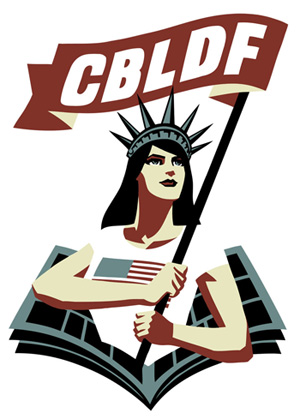 |
 |
Review by E.C.McMullen Jr. |
|
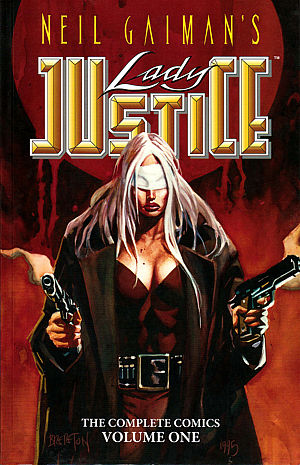
Writer: C.J. Henderson, Wendi Lee Artists: Michael Netzer, Jim Webb, Georges Jeanty, Mike Harris, and Steve Lieber First Pub. 1995 Tekno Comix, BIG Entertainment. / Hollywood Media Corp. Reissue: Sept. 7, 2014 Super Genius Comics $14.99 US ISBN: 978-1-62991-182-3 |
|||
Today Neil Gaiman (AMERICAN GODS, CORALINE) is a legend among his fans. But back in the 1990s, he was a whiz kid whose fans swore they saw an actual store based almost entirely upon a single comic book series of his called SANDMAN.
Fact is, the 1989 birth of Hot Topic stores, which quickly popped up all over the U.S. in malls across the country including Canada, wasn't formed over Gaiman's immediately popular SANDMAN. But thousands of Junior High through college students could be forgiven for thinking that, as DC Comics Vertigo imprint wisely hooked into the pop moment and its alternative consumer base that seemingly branded Hot Topic as your Sandman everything.
Neil Gaiman was on fire!
Which meant that NYC publishers and Hollywood studios were begging for everything he was writing about or about to write.
Even Stephen King at his hottest was never this hot.
Yet Neil was only one man. He could only write so much and he cared about quality.
Enter BIG Entertainment, a start-up comic book company created by the cofounders of the SciFi Channel, Laurie Silvers and Mitchell Rubenstein. Prior to selling the channel off (later reinvented as SyFy, who knows why?), they got to know a wide variety of major creatives from Isaac Asimov to Gene Roddenberry. Writers like that could really make a comic book company hit the ground running. That's where Neil Gaiman came in with the birth of BIG Entertainment and Tekno Comix.
Except all of Neil's published and unpublished work (committed to paper, but yet to be published) was already spoken for.
No problem! Did Neil have any, you know, ideas he hadn't sold?
Now writers who go around freely offering their ideas are just looking to be ripped off. You can't copyright an idea.
But you also can't legally use an author's name on a story without permission. For people at Neil's caliber, it's the name that makes advance sales of the work.
Neil Gaiman had three fleshed out concepts in his head and if you keep reading, we are going to look at the first one: Neil Gaiman's LADY JUSTICE.
Neil chose two authors, the hardcore detective novelist, C.J. Henderson (KOLCHAK AND THE LOST WORLD, THE SPIDER: SHADOW OF EVIL, BROOKLYN KNIGHT) and the fast rising up and comer, Wendi Lee (ROGUE'S GOLD, RUSTLER'S VENOM, RANCHER'S BLOOD).
Represented since the beginning of time as a robed woman, blinded, armed with naught but a sword and a sense of balance.
A woman cut off from the masculine world of clues and hard realities, forced into the depths of her remaining senses - touch, smell, taste, hearing.
A woman joined with her innermost self , focused only on her mission. A woman who cannot be deceived, cannot be fooled.
A woman blind...
...to all but justice.
C.J. Henderson started the series with Hope & Dread. A fast-paced, brutal tale of a crime syndicate that is out for human blood. But of what possible value is human blood and the high-risk killing spree involved in obtaining it?
No, it has absolutely nothing to do with vampires.
But due to several factors: the nature of the crime, the nature of the victims, the pleas of the innocent, and the grieving of the survivors, the cries for help reaches the very incarnation of Lady Justice. Otherworldly yet somewhat human in appearance, she is unable to directly use her powers over life on earth. So she must always search for an Avatar: One who is willing to surrender themselves to her so that she may surrender her power, however briefly, to them.
The Avatars who are granted the power of Lady Justice are human beings, all flawed themselves. But as they are all different women from all walks of life, the face of Lady Justice is ever changing.
She is never any one woman and will always be different women.
The first story involves a paraplegic woman. Janine Farrell was once a great ballerina according to Henderson's story, but to artist Michael Netzer, Janie is wildly unballerina in physique. With almost unnaturally massive breasts, always pushed out toward the viewer, and a gym-rat meticulous muscular hourglass figure that doesn't match in any way possible a woman who's spent so many years atrophying in a wheelchair, Netzer chose to make Janine more of a sexualized avatar of his 1982 co-creation (w/Neil Adams) MS. MYSTIC (who was already highly sexualized for her early 1980s era), than a woman resembling anything Henderson wrote about, and the incongruity shows as the story progresses.
There's an obvious gulf between what Gaiman wanted: Henderson's story, Henderson's dialogue for Lady Justice, and Janine Farrell, and what Netzer drew.
Henderson and Netzer continue Janine's tale after Hope & Dread with Steep'd In Blood.
C.J. finishes the final Janine Farrell chapter, More Wretched Than He Who Suffers, with artists Jim Webb and Georges Jeanty. Rick Magyar did the inks throughout. This is the best part of the story arc as Webb and Jeanty maintained Netzer's style of Janine without her sexy posturing. Janine is supposed to be kicking ass, not posing for Sports Illustrated.
Wendi Lee took her turn with the second story arc, Wrong Time, Wrong Place. This is the tale of children living in violent neighborhoods where the vicious circle act of being born enslaves you to the street gang your parents belong to.
There's no escape because the desire to improve your life and be anything better than the worst means you think you're better than anyone else, and that's a death sentence among the 66 Camino Real Reinas: None Shall Rise.
Sylvia was nearly beaten to death, but that's initiation into the 66 gang. She did it because that's what her Papa wants and that's what her boyfriend, Pasqualito wants. Joining the gang loses her any respect her little sister, Renata, ever had for her and despite Sylvia hiding behind family "tradition", she knows she'll never win her sister back.
That means danger for the family because anyone who comes of age and doesn't belong to the 66 is an outsider and not to be trusted. Which means her family, even if members, are not to be trusted.
Of course its even worse than that because there are always the young in power struggles with each other, and everyone wants their blood family to ascend to the top of their gang family, so deadly betrayals are frequent enough to render loyalty worthless.
Why then would anyone belong? Because if you live in the 'hood, the only thing worse than belonging to a gang of traitors is not belonging.
Into this volatile mix, death is almost daily, humanity sinks into the lowest bestial nature, and those dwindling few innocents that are living on the edge cry out their grief.
Lady Justice is there, vainly searching for an Avatar: an innocent, or relative innocent, among the thoroughly guilty. Throughout the course of this 3 issue arc, Justice may need more than one Avatar. The late Greg Boone did the pencils while Mike Chen supplied the inks.
Wrong Time, Wrong Place ups the ante on brutality yet unfolds the tragedy and hopelessness of children growing up in a place of violent insanity where there is no trust, no loyalty, and no right, only wrong.
When some of the traitors are revealed their betrayals make all the sense in the world.
C.J. Henderson returns to finish out the rest of the Volume One series, beginning with, The Chains That Bind. For this, Henderson worked with artist/penciller, Mike Harris.
Hoo boy! If I thought Michael Netzer made a sex object out of Janine Farrell, Harris went over the top with incongruous panty butt and crotch shots of Ellen. I'm not talking about one or two panels, I'm talking page after page after page. Again, the art derails the story as Mike Harris is more interested in aping late night Cinemax soft porn poses than delivering the Tarantino action packed brutal shoot 'em up that the late C.J. Henderson was writing.
This from a military vet and martial artist! Don't get me wrong, Mike's art is sterling: It's the physical posturing of the Lady Justice avatar that kills this.
Mike Harris left after the one story and Artist Steve Lieber (GRENDEL TALES, WHITEOUT) came in to complete the final five story arc that finished the year, delivering more high octane action, blood, and gore than a John Wick movie marathon.
Steve would go on to become both an Eisner Award winner (2000) and an Inkpot Award winner (2006).
Throughout, under Neil Gaiman's conceptual guidance and Jim Salicrup as Editor-In-Chief, LADY JUSTICE miraculously never dissolves into mindless killing spree and bloodshed.
No matter how horrific and harrowing these stories are, and they raised a bar that 30 years later has yet to be matched, human compassion prevails as without it, there's no point and the tales would be repetitive and dull.
Even after all of these years, Neil Gaiman's LADY JUSTICE will not let you down.
Four Fanboys




This review copyright 2022 E.C.McMullen Jr.
| GET SOME CLOTHES ON | |
| YOU MIGHT ALSO ENJOY | ||
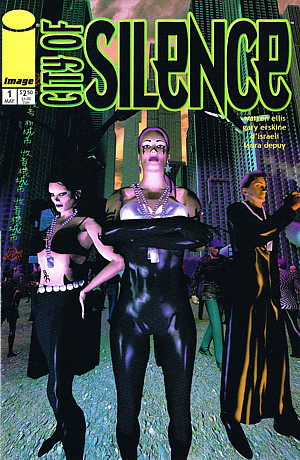 |
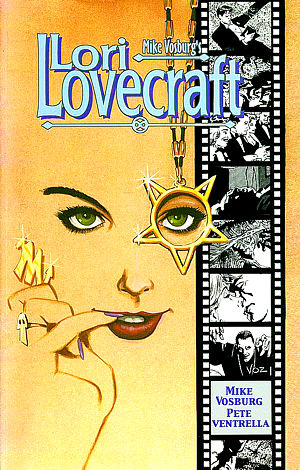 |
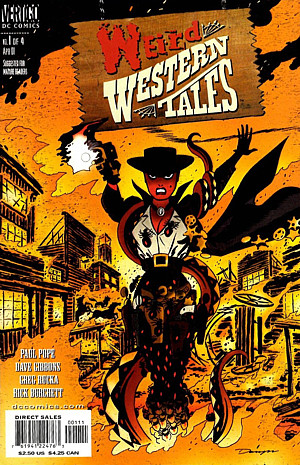 |
| CITY OF SILENCE COMIC BOOK REVIEW |
LORI LOVECRAFT COMIC BOOK REVIEW |
WEIRD WESTERN TALES COMIC BOOK REVIEW |
| FEO AMANTE'S HORROR THRILLER Created by: E.C.MULLEN JR. |
| COME FOLLOW ME @ Amazon |
| ECMJr |
| Feo Blog |
| IMDb |
| Stage32 |
| YouTube |
| Zazzle Shop |
